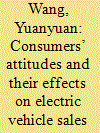|
|
|
Sort Order |
|
|
|
Items / Page
|
|
|
|
|
|
|
| Srl | Item |
| 1 |
ID:
115128


|
|
|
|
|
| Publication |
2012.
|
| Summary/Abstract |
Electricity demand forecasting could prove to be a useful policy tool for decision-makers; thus, accurate forecasting of electricity demand is valuable in allowing both power generators and consumers to make their plans. Although a seasonal ARIMA model is widely used in electricity demand analysis and is a high-precision approach for seasonal data forecasting, errors are unavoidable in the forecasting process. Consequently, a significant research goal is to further improve forecasting precision. To help people in the electricity sectors make more sensible decisions, this study proposes residual modification models to improve the precision of seasonal ARIMA for electricity demand forecasting. In this study, PSO optimal Fourier method, seasonal ARIMA model and combined models of PSO optimal Fourier method with seasonal ARIMA are applied in the Northwest electricity grid of China to correct the forecasting results of seasonal ARIMA. The modification models forecasting of the electricity demand appears to be more workable than that of the single seasonal ARIMA. The results indicate that the prediction accuracy of the three residual modification models is higher than the single seasonal ARIMA model and that the combined model is the most satisfactory of the three models.
|
|
|
|
|
|
|
|
|
|
|
|
|
|
|
|
| 2 |
ID:
185689


|
|
|
|
|
| Summary/Abstract |
There are close links and interactions among consumers' attitudes, the construction of charging infrastructure, and the diffusion of new energy vehicles (NEVs). This study focuses on consumers' sentient attitudes toward charging infrastructure and the effect of consumer attitudes toward the construction of charging piles and NEV sales using natural language processing technology and the panel vector autoregressive method. Consumers' sentient attitudes (i.e., positive, negative, and neutral) were inferred by analyzing consumer comments on charging infrastructure obtained from the internet. The key reasons for consumers' negative attitudes were further investigated, and the diversity in their attitudes was explored at the city level. The results show a growing concern for consumers about charging infrastructure since 2013. The overall satisfaction of consumers has constantly improved. The top pain points that cause consumers' negative attitudes are inconvenient charging, charging dilemmas, inability to install private charging piles, etc. Consumers' negative attitudes have a significantly positive impact on the charging piles’ construction. It also has a significantly negative impact on the sales of NEVs, but the effects are themselves short-term. Usually, the impact of negative attitudes is stronger than that of positive attitudes.
|
|
|
|
|
|
|
|
|
|
|
|
|
|
|
|
| 3 |
ID:
112729


|
|
|
|
|
| Publication |
2012.
|
| Summary/Abstract |
Corruption is one of the most pervasive obstacles to economic and social development. However, in the existing literature it appears that corruption seems to be less harmful in some countries than in others. The most striking examples are well known as the "East Asian paradox": countries displaying exceptional growth records despite having thriving corruption cultures. The aim of this paper is to explain the high corruption but fast economic growth puzzle in China by providing firm-level evidence of the relation between corruption and growth and investigating how financial development influences the former relationship. Our empirical results show that corruption is likely to contribute to firms' growth. We further highlight the substitution relationship between corruption and financial development on firm growth. This means that corruption appears not to be a vital constraint on firm growth if financial markets are underdeveloped. However, pervasive corruption deters firm growth where there are more developed financial markets. This implies that fast firm growth will not be observed until a later stage of China's development when financial markets are well-functioning and corruption is under control. Furthermore, the substitution relationship exists in the private and state-owned firms. Geographically, similar results can be seen in the Southeast and Central regions.
|
|
|
|
|
|
|
|
|
|
|
|
|
|
|
|
| 4 |
ID:
176765


|
|
|
|
|
| Summary/Abstract |
This study explores a spatial correlation network of regional energy eco-efficiency to examine the existence of such a correlation from the new perspective of networking. Firstly, by utilizing the panel data of 13 prefecture-level cities in Jiangsu Province from 2008 to 2017, a super efficiency Slack Based Model (SBM) was developed to calculate the energy eco-efficiency of 13 cities. Then, the spatial correlation network and its characteristics of energy eco-efficiency between prefecture-level cities are elaborated by using Vector Autoregression (VAR) granger causality test and social network analyses. The results show that: 1) there is spatial heterogeneity of energy eco-efficiency for the study period, and the gap in the South of the province and the Central and North is widening. 2) The spatial correlation network of energy eco-efficiency is unevenly distributed, only Nanjing is at the center of the network. 3) The energy eco-efficiency can be divided into four plates, but the spillover effect between plates is relatively low. The study confirms that there is a significant spatial correlation network of regional energy eco-efficiency. To boost the energy eco-efficiency in the whole region, it is necessary not only to specifically strengthen the export of technology and experience from advanced regions, but also to fully understand the role and maximize the advantages of each plate.
|
|
|
|
|
|
|
|
|
|
|
|
|
|
|
|
|
|
|
|
|